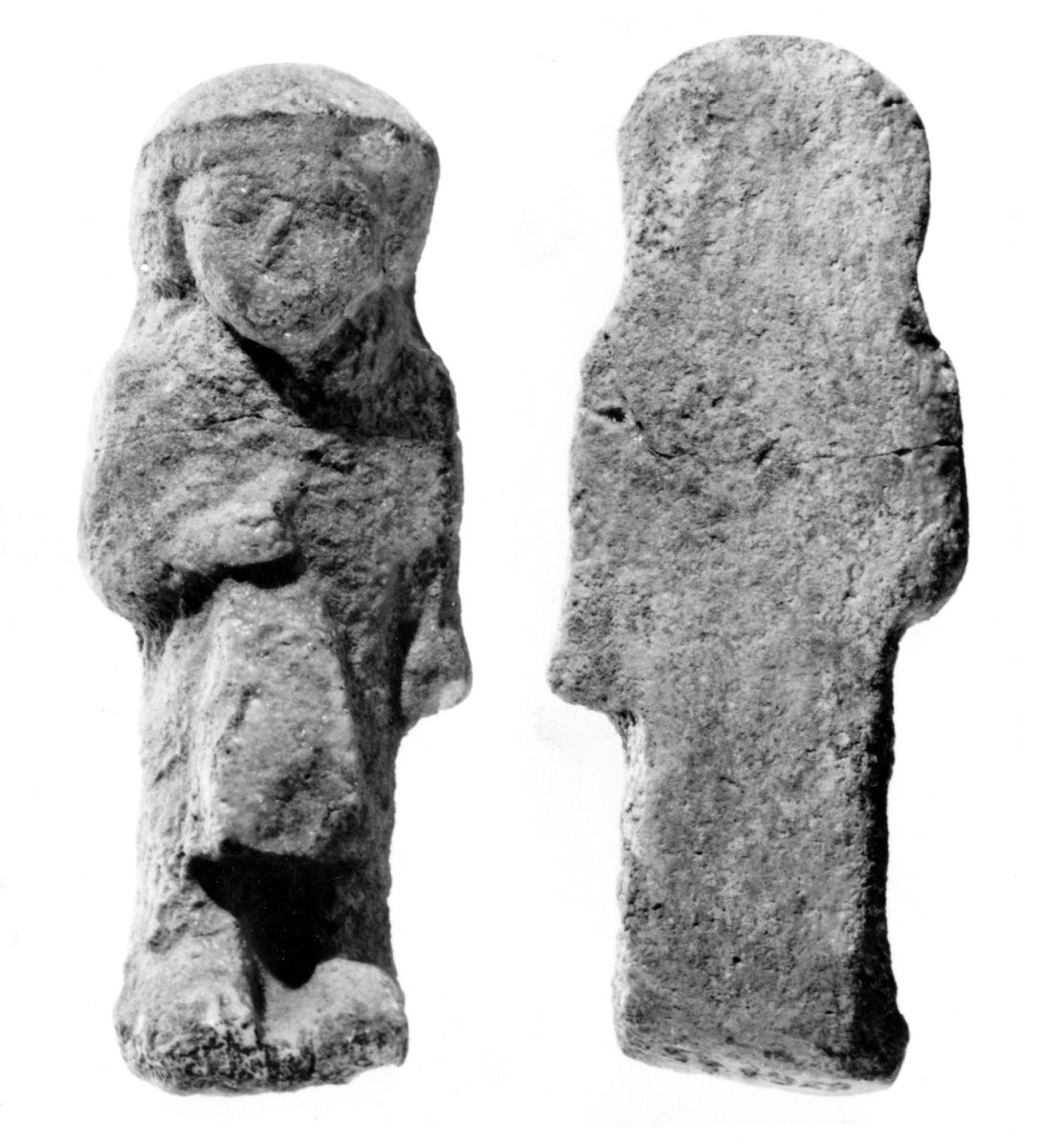
Shabti
Egyptian Art
| Place of production | Sebennytos (?), Egypt |
|---|---|
| Date | middle of 7th century B.C. |
| Object type | sculpture |
| Medium, technique | Bronze |
| Dimensions | 15 × 3.7 × 6.5 cm |
| Inventory number | 51.324 |
| Collection | Egyptian Art |
| On view | Museum of Fine Arts, Basement Floor, Ancient Egypt, Temples and gods |
This votive statue depicts the anthropomorphic figures of the ancient hunter and warrior god and his consort, the lion-headed goddess Mehit. It was probably dedicated by the royal family or one of the members of the elite at the time in one of the temples of Lower Egypt. Some stylistic features indicate that the donator lived at some time between the end of the Kushite Period and the beginning of the Saite Period.
In this statue, the taller and more dominant figure of Onuris strides forward with his left leg. His name could denote his ability to “reach/attain the sky” which is also expressed implicitly by his tall, sky-high Horus-feathered crown usually consisting of four falcon’s feathers. His ankle-length garment with a feather motif might refer to his celestial aspect, while the arrangement of the feathers on his robe resembles the metal scales of an armor. His curly, round wig is reminiscent of the military wigs used in the New Kingdom. With the help of his weapons and hunting implements, he was able not only to maintain cosmic order but to fix and uphold the sky in its original place.
During the New Kingdom, Onuris was assimilated with another celestial warrior, Shu, the god of light, syncretistically creating Onuris-Shu who was also revered in the temple of Sebennytos. On the other hand, having been made the protector of the sun-god Re, in Heliopolis, the center of the sun cult, he was worshipped as the “son of Re”. In his capacity as the protector of the sun, Onuris became part of one of the versions of the myth of the Solar Eye. In this version, the angry Solar Eye left Egypt and wandered to the desert land of Nubia. Because of the angry and infuriated aspect of the Solar Eye, it was embodied in the different versions of the myth by interchangeable goddesses (Sekhmet, Bastet, Tefnut, Hathor) who appeared in the form of a lioness. In some versions, Thoth or Shu created order, while other versions state that Re dispatched Onuris to bring back his Eye in order to prevent the country from falling into the primeval state of chaos. This statue represents the final act of the myth, when Onuris led the goddess Mehit, who embodies the Solar Eye here in her tamed lioness form, back to Egypt tethered to a cord.
Endrődi, Júlia, “Statue de bronze d’Onouris et e Mekhit/Onurisz és Mehit bronzszobra”, Bulletin du Musée Hongrois des Beaux-Arts/Szépművészeti Múzeum Közleményei 55 (1980), p. 9-16, 105-110, fig. 2.
A Szépművészeti Múzeum Egyiptomi Gyűjteménye, Szépművészeti Múzeum, Budapest, 2012, p. 94-95, no. 43.
This record is subject to revision due to ongoing research.